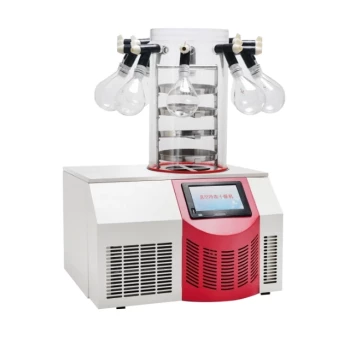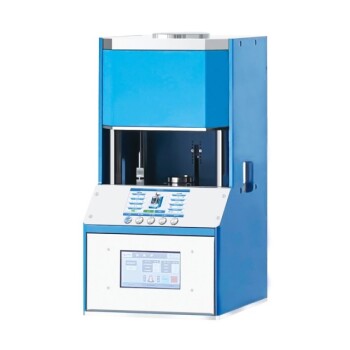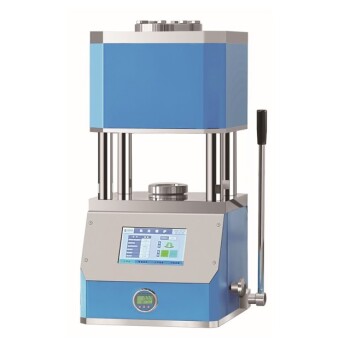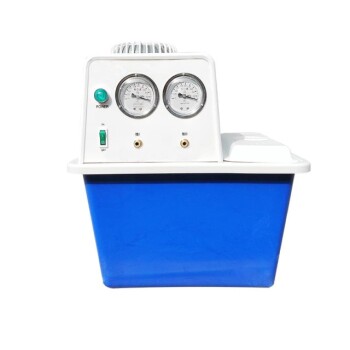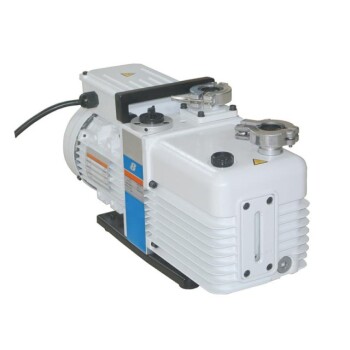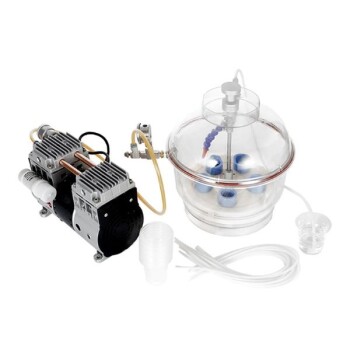Freeze drying, or lyophilisation, is a dehydration process that preserves the structure and biological activity of sensitive materials like food, pharmaceuticals, and biological samples. It works by freezing the product, then removing water through sublimation under vacuum, followed by secondary drying to eliminate residual moisture. This method is ideal for heat-sensitive items such as vaccines, antibodies, and proteins, as it avoids damage from high temperatures while extending shelf life. The process typically involves three main phases: freezing, primary drying (sublimation), and secondary drying (desorption), all carefully controlled to maintain product integrity.
Key Points Explained:
-
Definition and Purpose of Freeze Drying
- Freeze drying is a low-temperature dehydration process that removes water from frozen materials via sublimation (solid to gas transition without passing through liquid phase).
- It preserves the physical structure (e.g., shape, texture) and biological activity (e.g., enzymes, proteins) of sensitive products, making it critical for pharmaceuticals, research samples, and gourmet foods.
- Unlike conventional drying, it avoids heat damage, ensuring stability for temperature-sensitive compounds like vaccines (Laboratory Freeze Dryer).
-
Core Steps in the Process
-
Freezing Phase:
- The product is cooled to below its eutectic point (typically -40°C to -80°C) to solidify all free water into ice crystals.
- Rapid freezing (e.g., using liquid nitrogen) creates smaller ice crystals, which minimizes cell disruption in biological samples.
-
Primary Drying (Sublimation):
- A vacuum is applied (usually 0.1–0.6 mbar), and controlled heat is added to sublimate ice directly into vapor.
- Vapor is captured on a condenser (at -50°C or colder), preventing rehydration of the product.
-
Secondary Drying (Desorption):
- Temperature is gradually raised (up to 20°C–40°C) to remove bound moisture adsorbed to the material’s matrix.
- Residual moisture content is reduced to 1%–3%, ensuring long-term stability.
-
Freezing Phase:
-
Applications and Advantages
- Pharmaceuticals: Preserves vaccines (e.g., mRNA COVID-19 vaccines), antibiotics, and labile proteins without denaturation.
- Food Industry: Retains flavor, color, and nutrients in coffee, fruits, and ready-to-eat meals.
- Research: Stabilizes enzymes, tissues, and microbial cultures for storage and transport.
-
Key Benefits:
- Extended shelf life (years without refrigeration).
- Rehydration capability (near-original properties upon water addition).
- Lightweight output (reducing shipping costs).
-
Equipment Considerations
- A Laboratory Freeze Dryer must offer precise control over temperature, vacuum pressure, and drying time.
- Features to prioritize:
- Condenser Capacity: Larger condensers handle higher water volumes (critical for batch processing).
- Vacuum Pump Quality: Oil-free pumps reduce contamination risks in sterile applications.
- Shelf Temperature Uniformity: Ensures consistent drying across all samples.
-
Challenges and Mitigations
- Long Process Time: Sublimation can take 24–48 hours; optimizing freezing rates and vacuum levels improves efficiency.
- Cost: High energy use and equipment investment justify ROI through product value (e.g., biologics).
- Formulation Additives: Protectants like trehalose are often added to prevent collapse during drying.
By understanding these principles, purchasers can select equipment tailored to their specific needs—whether for small-scale research or industrial production—while ensuring optimal preservation of sensitive materials.
Summary Table:
| Phase | Key Actions | Purpose |
|---|---|---|
| Freezing | Cool product below eutectic point (-40°C to -80°C) to solidify water into ice. | Prevents structural damage and prepares for sublimation. |
| Primary Drying | Apply vacuum (0.1–0.6 mbar) and heat to sublimate ice; vapor trapped on condenser. | Removes 95% of free water while preserving product integrity. |
| Secondary Drying | Gradually raise temperature (20°C–40°C) to desorb bound moisture. | Reduces residual moisture to 1%–3% for long-term stability. |
Optimize your preservation process with KINTEK’s freeze drying solutions! Whether you're stabilizing vaccines, food, or research samples, our lab equipment ensures precise temperature control, rapid sublimation, and contamination-free results. Contact our experts today to find the ideal freeze dryer for your needs—enhancing shelf life and maintaining critical product quality.



